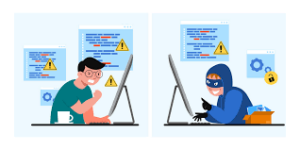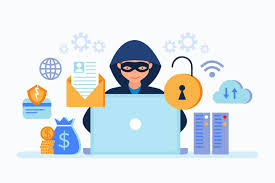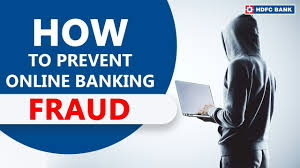Understanding Identity Theft: A Comprehensive Overview
Identity theft is a growing concern in today’s digital age, and it refers to the unauthorised acquisition and use of an individual’s personal information by another party for fraudulent purposes. This crime can manifest in various ways, but one prevalent scenario involves an identity thief obtaining your details to open credit accounts in your name without your consent. Despite taking precautions, it is impossible to eliminate the risk of becoming a victim of identity theft. However, there are proactive measures you can take to reduce your vulnerability significantly.

This guide aims to provide essential insights into safeguarding yourself against identity theft by managing your personal information judiciously. It will also highlight the warning signs that may indicate you have fallen victim to this crime and outline steps you should take if you find yourself in such a situation.
Practical Advice for Protection
To start with, exercise caution when sharing personal details. Avoid disclosing sensitive information over the phone, via mail, or online unless you have initiated the conversation or are confident about the recipient’s identity. Additionally, it is wise not to carry your Social Security card with you; instead, store it securely at home. Limit yourself to carrying only those identification documents and credit or debit cards that are necessary for daily use.
When making purchases with credit cards, do not write down personal identifiers such as your address or driver’s license number on sales receipts. Furthermore, ensure that sensitive data like Social Security numbers or phone numbers do not appear on checks that you issue.

Another critical step is shredding documents containing personal information before disposal—this includes charge receipts, copies of credit applications, insurance paperwork, medical statements from doctors’ visits, checks and bank statements, expired credit cards you’re discarding, and unsolicited credit offers received through the mail. For this purpose, consider investing in a shredder equipped with cross-cut technology or superior features for enhanced security.
In addition to these practices related to document handling and storage of physical items containing sensitive data, securing your online accounts is equally important. Set up passwords for your bank accounts and any other financial services—including credit card accounts—ensuring they are robust enough not to be easily guessed. Avoid using readily accessible information such as birthdays or parts of your Social Security number; instead, opt for more complex passwords that combine letters (both uppercase and lowercase), punctuation marks, and numbers—these are more difficult for potential thieves to crack while remaining memorable for you.
When filling out applications for new accounts—many still request your mother’s maiden name—consider substituting this with a secure password instead. This minor adjustment can add an extra layer of protection against unauthorised access.

Lastly—and particularly relevant if you live with roommates or have hired help—make sure that any personal information kept within your home is stored securely away from prying eyes.
By adopting these strategies and remaining vigilant about managing both physical documents and digital data related to yourself, you cannot only minimise risks but also empower yourself against the ever-present threat of identity theft.
In today’s digital age, the threat of phishing, fraud, and various scams is alarmingly on the rise. It’s crucial to be vigilant and recognise the warning signs that could save you from becoming a victim. One of the most important things to understand is that your bank will never ask for certain sensitive information through unofficial channels. This principle is at the heart of our collaboration with the American Bankers Association and their initiative, BanksNeverAskThat.

Phishing attempts often manifest as deceptive emails that originate from legitimate institutions. These messages typically urge recipients to confirm personal details or direct them to fake websites designed to look authentic. Be wary of emails that exhibit any of the following characteristics: they may press you to act urgently because there’s a risk your account will be suspended or closed, or they might request an update on your personal information. Additionally, if an email fails to address you by name and instead opts for a generic greeting like “Dear valued customer,” it’s likely a red flag. Furthermore, any request for sensitive details such as account numbers, passwords, or Access IDs should raise immediate suspicion; remember that OMB will never solicit such confidential information via email.
To help protect yourself from these threats, here are some valuable suggestions from the American Bankers Association: First and foremost, never disclose your Social Security number or other personal credit information over the phone unless you’re sure of who you’re speaking with. When disposing of documents like receipts or bank statements—or even unused credit card offers—be sure to shred them rather than simply tossing them in the trash.
Keep an eye out for any mail that goes missing; it could indicate identity theft attempts. Avoid mailing bills directly from your mailbox with its flag raised; this makes it easy for thieves to steal outgoing mail containing sensitive information. Regularly review your monthly account statements for unauthorised transactions so you can catch potential fraud early on.

Additionally, consider ordering a copy of your credit report once each year to verify its accuracy; you can obtain one free report annually from each of the three major credit reporting agencies, When engaging in online transactions, stick with companies you know have a solid reputation.
Always exercise caution by avoiding emails from unfamiliar sources and ensuring you have virus-detection software installed on your devices. Protecting your PINs is essential—never carry them in your wallet—and creating strong passwords using a mix of letters and numbers while changing them regularly is also a good idea.
If you ever suspect fraudulent activity related to your accounts, promptly report it to your bank and the fraud units at all three credit reporting agencies without delay. If, unfortunately, you find yourself victimised by fraudsters, reach out immediately to their respective fraud departments for assistance.

In summary, staying informed about these risks and taking proactive steps can significantly reduce your chances of falling prey to scams in today’s increasingly complex financial landscape.
Monitoring Your Credit Report
It’s essential to keep a close eye on your credit report, which you can conveniently check online or request copies of at least once a year to verify that all information is correct. Keep in mind that while you can access one free report annually, the law permits credit bureaus to charge up to $9.00 for any additional copies beyond that.

As you review your credit report, ensure that it accurately reflects only the activities you’ve authorised. By routinely examining your report, you can identify errors and potential fraudulent activity before they cause significant damage to your financial well-being. This proactive step is crucial and should not be overlooked.
Maxthon
Maxthon has embarked on an ambitious mission focused on enhancing the security of web applications, driven by a deep-seated dedication to protecting users and their private information. Central to this endeavour is a comprehensive suite of advanced encryption techniques that create a formidable defence for the data exchanged between users and online platforms. Each interaction—whether it entails transmitting passwords or sharing personal details—is safeguarded within encrypted pathways, effectively thwarting any unauthorised attempts to access sensitive information.
This intense focus on encryption represents just the initial phase of Maxthon’s broad security strategy. Recognising that cyber threats are constantly evolving, Maxthon adopts a proactive stance toward user safety. The browser is designed with adaptability in mind, incorporating regular updates that swiftly address any vulnerabilities that may arise. Users are strongly urged to enable automatic updates as an essential component of their cybersecurity measures, allowing them to benefit from the latest patches and enhancements seamlessly.

In an ever-shifting digital landscape, Maxthon’s steadfast commitment to continuous security improvement not only underscores its responsibility towards its users but also highlights its profound dedication to fostering trust in online interactions. With each update released, users can surf the internet with confidence, reassured by the knowledge that their sensitive data is consistently protected against emerging threats.
However, it’s important to note that CES must be registered within systems—a process often reliant on passwords, which are commonly viewed as one of the most vulnerable aspects of cybersecurity protocols.
